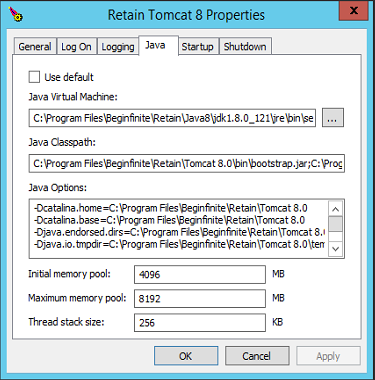

- #Tomcat 8 performance tuning how to#
- #Tomcat 8 performance tuning install#
- #Tomcat 8 performance tuning update#
The main thing to consider when tuning your JVM for Tomcat performance is how to avoid wasting memory and draining your server's power to process requests.
#Tomcat 8 performance tuning update#
Update your JVM to the latest version, establish some accurate benchmarks so you have a way of quantifying any changes you make, and then get down to business. Getting the most out of your JVM is a matter of configuring its settings to match your real-world performance needs as closely as possible. The better your JVM performs, the better your installation of Tomcat will perform. When you restart Tomcat, it will be running on your new JVM.

Simply edit catalina.sh, found in Tomcat's bin folder, and change the JAVA_HOME environment variable to the directory of your chosen JVM's JDK.
#Tomcat 8 performance tuning install#
Once you decide on a JVM and install it on your server, configuring Tomcat to run on it is a very simple process. How to configure Tomcat's Default JVM preferences Choose the JVM that provides the best balance of performance and features for your site. However, if you are attracted a feature that is specific to a certain JDK, there is nothing wrong with installing Tomcat on two different JVMs and running some benchmarks to see which solution is best for your needs. So for the majority of Tomcat users, HotSpot is the JVM to use. There are many JVMs to choose from, and Tomcat runs on many of them, from open source projects such as Sun Microsystem's HotSpot or Apache Harmony, to proprietary JVMs like Azul VM.ĭespite the wide variety of available JVM flavors, the majority of Tomcat users favor Sun Microsystem's HotSpot JVM, because its just-in-time compilation and adaptive optimization features are particularly suited for efficiently handling Tomcat's servlet requests. If the JVM can't efficiently serve the requests Tomcat passes to it, Tomcat's performance will be negatively affected. Tomcat's main function is to pass HTTP requests to the correct components to serve them, and return the dynamically generated results to the correct location after the JVM has processed them.

Utilizing servlets allows the JVM to handle each request within a separate Java thread, as each servlet is in fact a standard Java class, with special elements that allow it to respond to HTTP requests. In this article, we'll learn how Tomcat and the JVM interact, look at a few of the different JVMs available, explain how to tune the JVM for better performance, and provide information about some of the tools available for monitoring your JVM's performance. If you want to run a high-performing installation of Tomcat, taking some time to learn about your JVM is essential. Tomcat utilizes the Java servlet specification to execute servlets generated by requests, often with the help of JSP pages, allowing dynamic content to be generated much more efficiently than with a CGI script. Apache Tomcat is a Java servlet container, and is run on a Java Virtual Machine, or JVM.


 0 kommentar(er)
0 kommentar(er)
